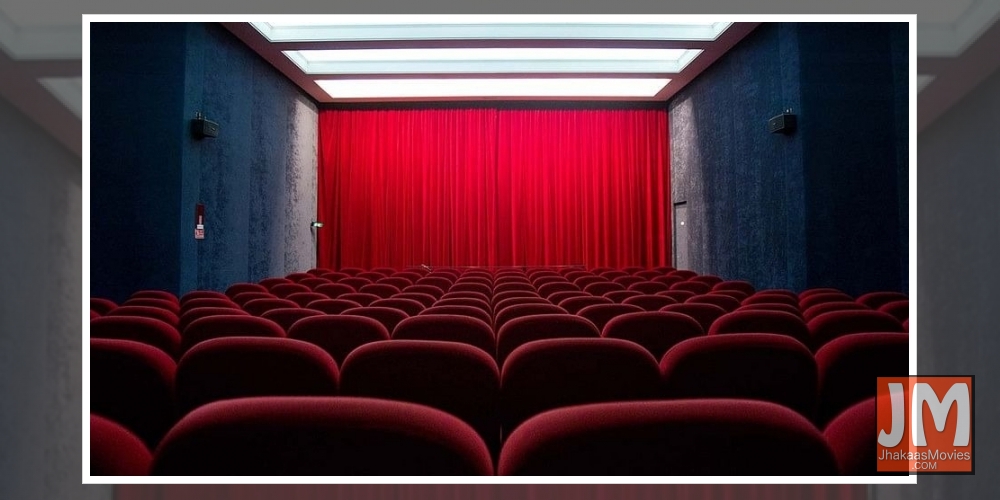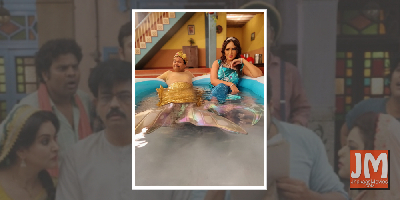 Aan Tiwari honoured with Best Child Actor award for Baal Shiv
Aan Tiwari honoured with Best Child Actor award for Baal Shiv Ghategi rahasymayi ghatnaye!
Ghategi rahasymayi ghatnaye! Amazon Prime Video unveils the 2021 Festive Line-up; brings a heady mix of Indian and International titles on the service
Amazon Prime Video unveils the 2021 Festive Line-up; brings a heady mix of Indian and International titles on the service Release: Music video of, Yeh Haalaath, from Mumbai Diaries 26-11
Release: Music video of, Yeh Haalaath, from Mumbai Diaries 26-11 Bhumi Pednekar feels she shares feel-good value with Akshay Kumar on screen
Bhumi Pednekar feels she shares feel-good value with Akshay Kumar on screen
The Glorious Single Screen Era (Column: B-Town)

BY VINOD MIRANI
It has been some time since the cinema screens opened to business following the corona lockdown throughout the country. The owners were keen that the governments permit screenings to resume, so that it could be business as usual. As the governments eased lockdown on other businesses and day-to-day life, cinemas were also eventually allowed to reopen conditionally.
Most of the single screen properties across India had been forced to shut down once the multiplexes opened in the country. The few that had managed to survive and sustain were old properties either inherited or built before the advent of the multiplex culture. Even when the multiplex managements were lobbying for permission to resume screenings, the single screens were not very keen. That is because, the single screen managements know the pulse of their patrons. They did not find sense in opening up and expect the viewers to come when the Covid-19 problem was not fully eradicated, or the people were vaccinated.
Single screen properties were mostly family-owned and knew their business, knew their patrons. They knew tastes, pulse and occasions that mattered to their audience. Those who managed single screens -- from owner to the manager -- had their ear to the ground. It was not a wise decision to take the responsibility of their patrons even if they came to the cinema hall. Also, with the kind of conditions put by the Government, they would be adding to their liability rather than make ends meet, let alone earn profits.
The single screen business of yore was scattered, as in each cinema to his own. With over 12,500 single screen properties around the country, each worked independent of each other and, if they had an association, it was only at the local level. There was no national body to represent them. Hence, these local bodies had their limitations when it came to protecting the interests of the members, and were in no position to dictate terms to distributors. Actually speaking, all the protection they needed was from the high-handed attitude of the governments, for whom the cinemas were a source of making money without giving anything in return.
This was an arrangement that worked well for both, the exhibitor as well as the distributor, because both expected to protect the interests of each other. It was the era of bonhomie in business.
In fact, a lot many cinemas were built by people who had other businesses and the monies earned from there were invested to build a cinema hall as a hobby, besides creating a property for future generations. It gave them status and earned respect. It was a kind of kick when local VIPs called and requested to reserve tickets. In fact, all cinemas had, what was called, the owner's seats; a row of seats for the last minute guests of the cinema owner or family.
For very few, owning a cinema was the main source of income. Yet, the owner or the manager had little to do with what film was booked for his cinema. For example, in Bombay Circuit, which included Gujarat, Saurashtra, Kutch, Goa, Maharashtra and a part of Karnataka, the business hub was Mumbai. Similarly, for Delhi-UP Circuit, it was Delhi, where the film business was located in and around Chandni Chowk. Bentinck Street in Kolkata was the Eastern Circuit hub while Mandi Road, Jalandhar, housed most film business offices.
No cinema owner needed to visit Mumbai or Delhi to book a film for his cinema week after week, and this job was outsourced to a person or a syndicate known as Chain Holder in these cities. As the very term implies, these Chain Holders booked films for many cinema halls located in the interiors in various cities, towns and villages of a particular circuit.
Cinema exhibition was an interesting and exciting business those days. The cinema prints were not in digital format yet, and physical delivery of heavy trunks containing 16 to 18 reels of cinema prints had to be done manually to the cinemas located in far off suburbs of a metro overnight. It gave employment to a lot of people.
Prints were costly and a film distributor had to cater to many cinemas where a film ran only for a week. It was not wise to invest in a print costing anything from 50 to 70 thousand rupees for a one-week run. An indigenous way was devised to use one print at two cinemas. As two closest cinemas shared a print (they were not always too close to each other), the print shuttled between two cinemas. Show timings were staggered depending on the distance between two cinemas sharing a print. So, if the prominent cinema of a locality started a show at 12 noon, the secondary cinema started at 12.30. Since the print came in reels, a few reels were cycled off to the second cinema after the first cinema was done screening them!
Sounds, simple and easy but it was a challenging task for the cycle-riding couriers. For, the keen cinema lovers reacted and wreaked havoc if a show was delayed or had a break during the screenings. Today's pizza and other delivery boys have it easy in comparison.
For the patron of a cinema, the relationship with his local single screen was that of possessiveness. The way things worked, a film was released at the centre of a city in one or two screens. Rest of the prints were engaged in the suburbs so that the locals could take it in. So every locality was served. That way, the films had a steady run. The scene now is quite opposite. Not only a single multiplex property has two or three screens playing the same film in anything between five to six shows a day, but there are areas in cities, like Link Road, Andheri, Mumbai, where there are as many as 15 screens playing the same feature. This ends up baiting potential audience within two to three days.
Single screen cinemas in a town or a city competed among themselves to retain audience and, to make sure they managed to do it, they made sure the best films came to them, whatever it took. In those days, the films were acquired by a cinema on various terms. One of them was Fixed Hire (FH), whereby a cinema owner offered a certain amount to run the film at his cinema. That was a usual practice. What was strange was that the cinema offered a Fixed Hire worth the amount of its full house collections, keeping no margin to earn from ticket sales! The idea was to not let the other cinema hall to get the film!
One would be curious to know how the cinema earned. The answer was if a film was good, they would earn from the canteen sales and scooter-cycle parking charges. An owner was not greedy at all when it came to keeping the prestige of his cinema intact and not letting a big film go to a competitor cinema.
All these aside, what mattered finally, was the comfort of the patron. Comfort did not always mean luxury and, if one had a look at many single screen cinemas where many films ran their silver and golden jubilees, some of these really looked shabby. Comfort came from the rapport and feel-at-home sense that these cinema halls provided. The regulars were known to the staff/ushers as well as the management.
Cinema business was all about native intelligence and little about the acquired kind.
(Vinod Mirani is a veteran film writer and box office analyst. The views expressed are personal)
Tags: Cinema, Showbiz, Lifestyle, Fashion, Quote Unquote








